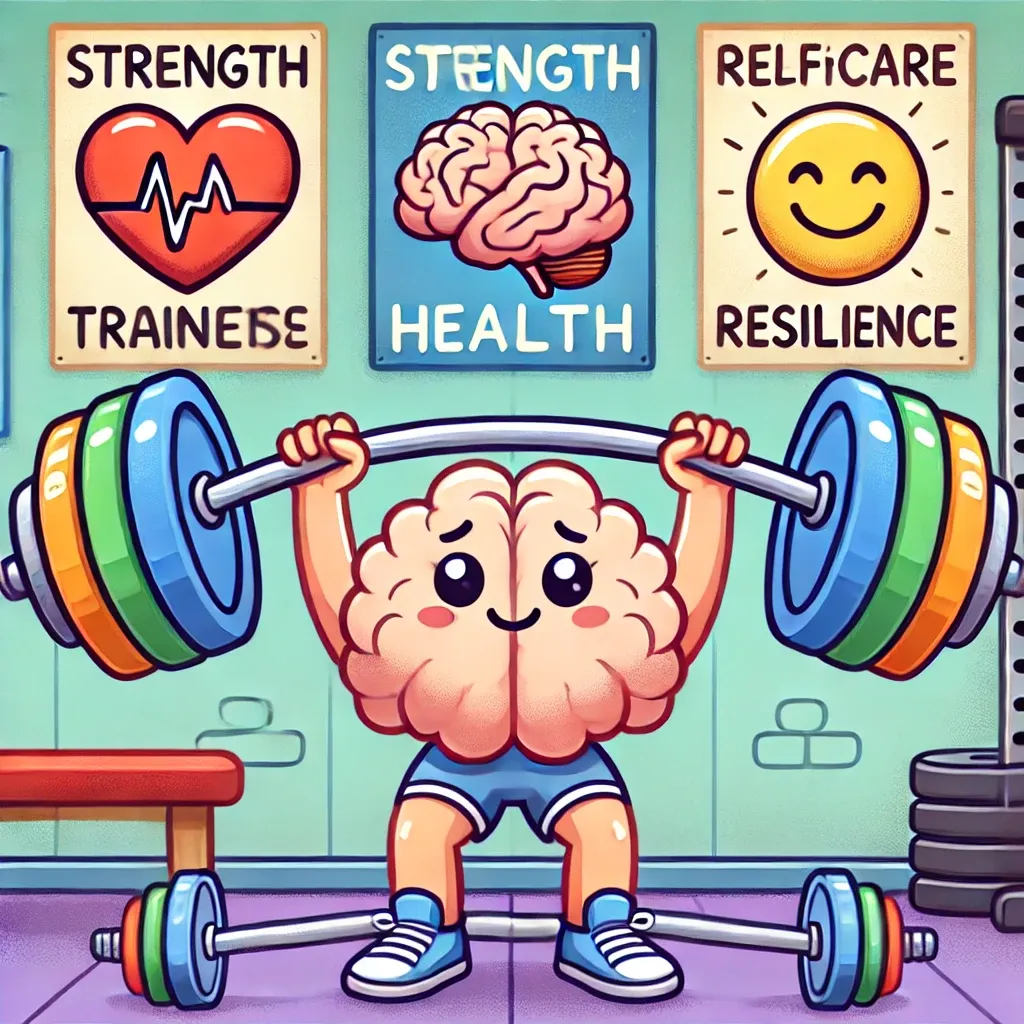Trauma-Informed Weight Lifting: A New Approach to Healing

Welcome back, Varrock Street Journal Community!
As many of you have already figured out, I would consider myself a little bit of a “health nut/enthusiast” and always get excited upon learning something positive that exercise brings to our lives. This past week, in one of my lectures, we were discussing trauma and the importance of discovering healthy ways to manage this hardship and the stressors associated with it throughout a person's life. During our lecture, the physician made the statement, “I really wish in medical school someone would have made me understand how important lifting some weights would be for the rest of my life for both physical and mental health”. She specifically was referring to the mental aspect of this…. Trauma, rather than the physical, we have discussed here time and time again. This week, we are diving into some of this literature to unravel what possible secrets weight lifting may have to the mental burden caused from any sort of trauma in one's lifetime through a fascinating study on Trauma-Informed Weight Lifting—an innovative approach that integrates psychological safety, community support, and personalized coaching to make strength training accessible and empowering for trauma survivors.

Breaking Down the Research
A recent study published in Frontiers in Psychology examines the intersection of weight lifting and trauma recovery, proposing that traditional gym environments often fail to meet the needs of trauma survivors. Researchers found that many individuals face barriers to participation, including lack of safe spaces, stigma, and a lack of trauma-sensitive coaching.
Using a mixed-methods approach, the study conducted surveys and interviews with 46 trauma-impacted weight lifters to understand their experiences. The findings highlighted six core principles for trauma-informed weight lifting programs:
- Safety – Ensuring gyms provide an environment where individuals feel physically and emotionally secure.
- Trustworthiness & Transparency – Coaches should set clear expectations and respect boundaries, particularly regarding physical touch.
- Peer Support – A strong gym community can reduce feelings of isolation and provide a network of encouragement.
- Collaboration & Mutuality – Training programs should be flexible, allowing individuals to tailor exercises to their comfort levels.
- Empowerment & Choice – Athletes should have autonomy over their training, including opting out of weight measurements and choosing how they participate.
- Cultural, Historical, & Gender Awareness – Gym spaces should be inclusive, acknowledging the unique challenges faced by marginalized groups.
Why This Matters
Traditional gyms and strength training programs often emphasize competitiveness, performance, and standardized routines. However, for individuals recovering from trauma, this approach can be counterproductive. The study highlights how a trauma-informed framework can transform the gym into a space for healing rather than a source of stress.
Additionally, this research underscores the importance of inclusivity. Many trauma survivors, especially those from marginalized communities, experience additional barriers to accessing fitness spaces. Addressing these gaps could lead to a more welcoming and effective approach to mental health through exercise.

Here is a podcast from the viewpoint of a personal trainer who specifically helps clients with PTSD and trauma through weight training.
Spotlight on Future Applications
The insights from this study pave the way for the development of new fitness programs that integrate mental health support with strength training. Potential applications include:
- Certification programs for personal trainers in trauma-informed coaching.
- Gym designs that prioritize psychological safety, such as private spaces and adjustable lighting.
- Community-based lifting programs emphasize support rather than performance metrics.
- Research into the long-term mental health benefits of trauma-informed exercise approaches.
By rethinking how we approach strength training, we can make fitness a more accessible and healing experience for everyone.
Personal Note:
- Exercise and health have been a crucial aspect of my life since discovering running in middle school. The combination of running, weight training, and sports allowed me to develop a competitive spirit, which have helped in various aspects of life. Now, while going through my medical education, this routine has allowed me to find a healthy form of stress relief, as well as something to look forward too outside of education and "not so healthy" habits such as playing video games and watching television. I intend to continue using strength training and running in similar ways as I continue into my professional career.
Reflection Questions
- How do gym environments impact your sense of safety and motivation?
- What changes could fitness facilities implement to be more inclusive for trauma survivors?
- How does strength training influence your mental well-being and confidence?
Thank you for reading this edition of The Varrock Street Journal! Whether you’re an experienced weightlifter or just curious about the science behind fitness and mental health, we hope this discussion provided valuable insights. Until next time, stay strong and stay informed!
Follow us on TikTok and Instagram for more discussions on science, health, and technology!

